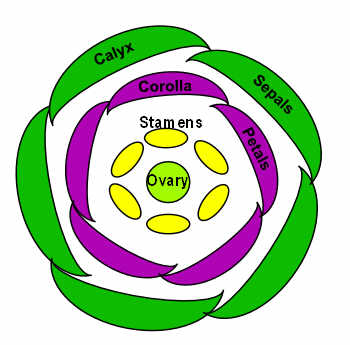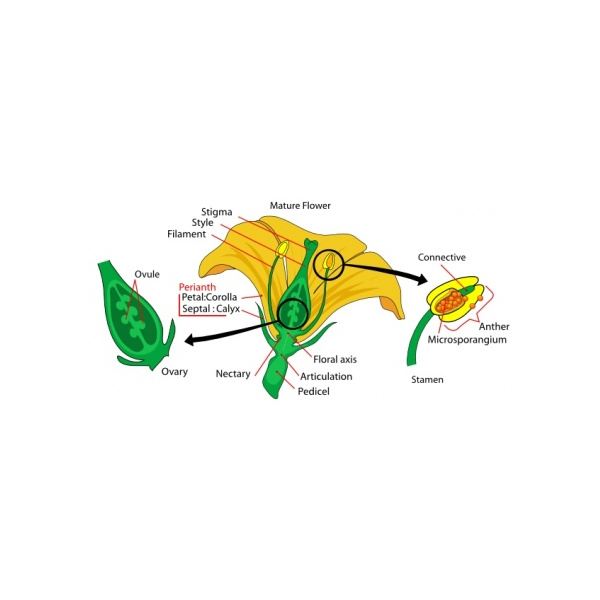Flower structure:
Flower is the reproductive responsible part of the plant. It consists of four concentric rings of structure. The first one is sepals which are green and they protect the flower before it opens. This outer part is called calyx. The second part is petals which exist inside the sepals and they are often brightly colored. The smell of the flower produces by the oils that are in the petals. This part is also known as the corolla. This is a part which isn’t clearly appeared in most of the flowers kinds. But it may be the most attractive part in some other plants. This part is called stamens. The last part is organ which is in the very center of the flower that is considered the female reproductive part.
Flower structure

The reproductive system:
Without debut, the reproductive parts are the most important parts of a flower. Because the main function of a flower is to reproduce. A flower often reproduces by creating seed which is disappeared and becomes new plants.
Female productive parts:
The female parts are the carpel, which is melted together in most flowers to form a pistil. The pistil that is usually found in the center of the flower and it’s basically a home for the ovules. A pistil which has three parts: 1- the sac at the bottom that is called an ovary.
2- The thin tube leading downward called a style.
3- A sticky part at the top called a stigma.
When the male gamete, which is called the pollen reaches the pistils. The pollen stuck to the stigma. Then, it travels down the style into the ovary, which there it meets with the ovules and fertilizes them.
Male productive parts:
The male parts are simpler than the female’s. They are consists of one or more stamens. Each stamen includes paired anthers on a stalk or filament. These anthers are the yellow structures usually seen in the center of a flower. The pollen from the anthers of one flower is transferred to the stigma of another by animals especially insects or by the wind.
Reproductive parts

To fertilize the ovules in the ovary, the pollen needs to get inside the ovary. The pollination can take place in many various ways. Sometimes, the wind carries the pollen towards the pistil. So hat, it gets stuck on the stigma. Some other times, an animal brushes by the stamens and carries the pollen on its fur until it falls off near a pistil. You should notice that not all the flowers are self- fertilizing, some other flowers become fertilized by the pollen from other flowers.